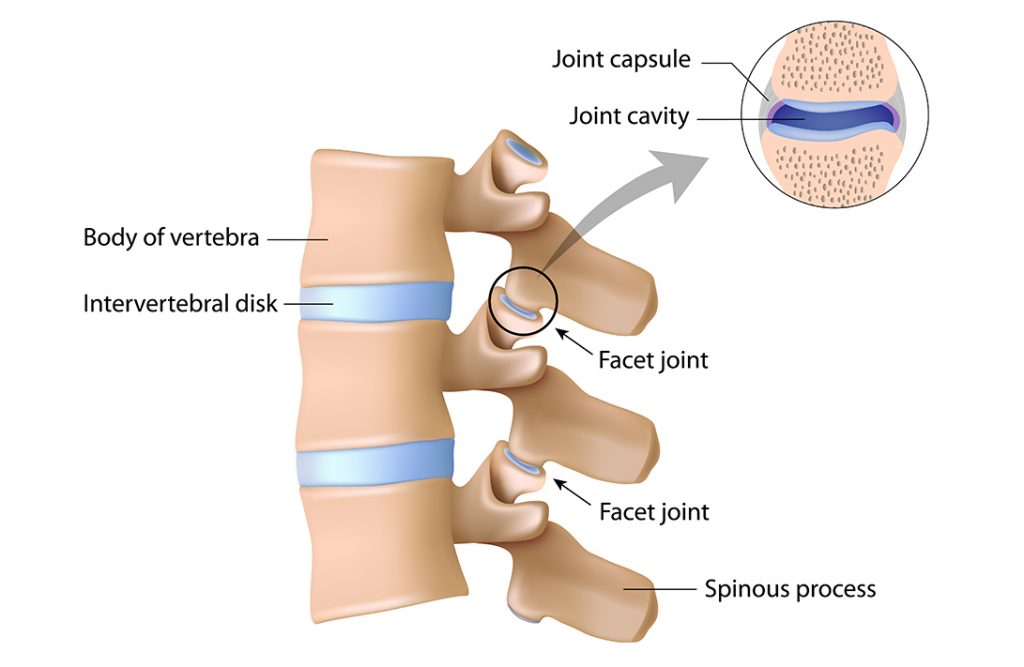The lumbar facet joints are the interlocking joints at the sides of the spine between each lumbar vertebrae. These joints, along with the intervertebral discs, enable the vertebrae to slide and glide on one another which allows us to bend forwards and backwards.The lumbar facet joints can cause pain if they become stiff due to a lack of movement (e.g. prolonged sitting) or with age due to arthritis. The ligaments around the joints can also become sprained with sudden or repetitive twisting or lifting.


JOINT PAIN & STIFFNESS (FACETOGENIC)
What is facetogenic lower back pain?
What are the symptoms of facetogenic lower back pain?
Symptoms involving the facet joints of the back can range from mild stiffness to significant pain, common symptoms can include:
- Pain and/or stiffness when arching or twisting you back
- Pain and/or stiffness with walking and standing
- Pain radiation into the buttock, thigh or groin
- Sometimes nerve pain, numbness or pins and needles can be felt in the leg on the same side to the back pain
- Back muscle tightness
How is facetogenic lower back pain treated?
Facetogenic lower back pain is very common and generally easily diagnosed by your physiotherapist, very rarely is a scan required. Your treatment will be dependant on the severity of your symptoms and might involve:
- Advice on movements and activities to avoid or continue with
- Hot pack for muscle relaxation
- Hands-on treatment to reduce muscle tension and joint stiffness
- Gentle exercises to improve your back mobility, lying on your back bringing your knees towards your chest is usually a great way to relieve pain in this type of back pain
- Exercises to improve your core and back strength and flexibility
- Clinical Exercise (incorporating Pilates principals).

